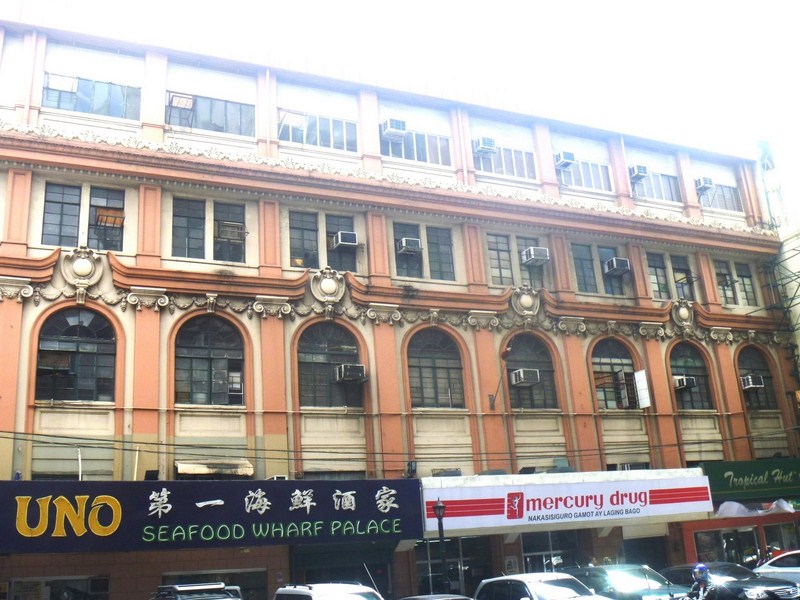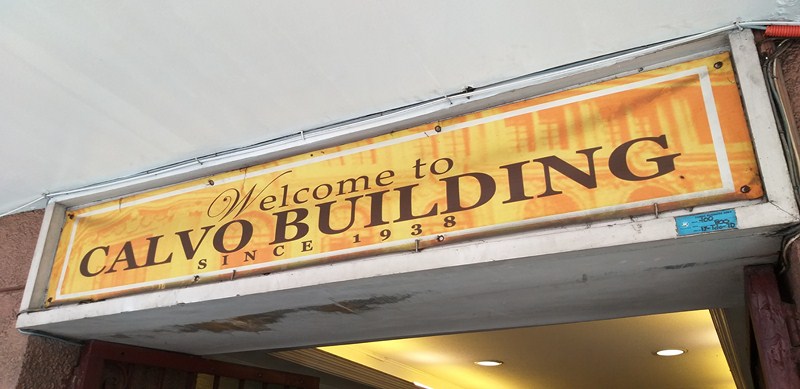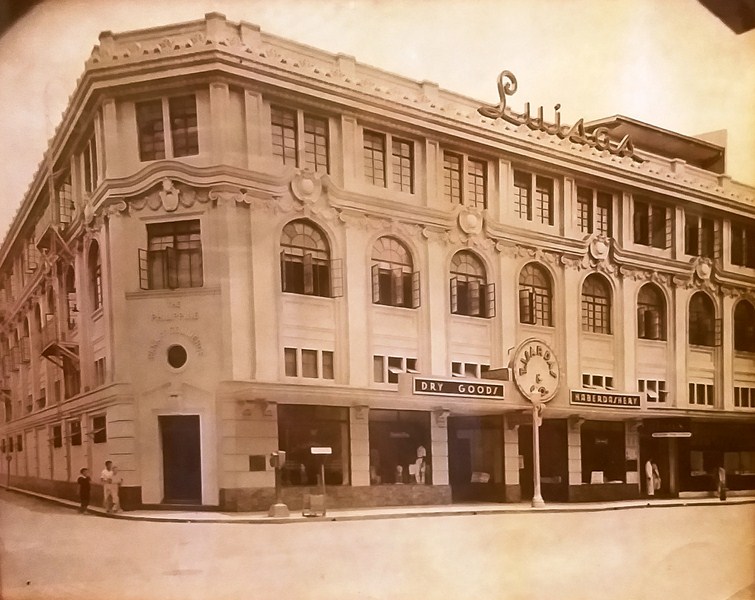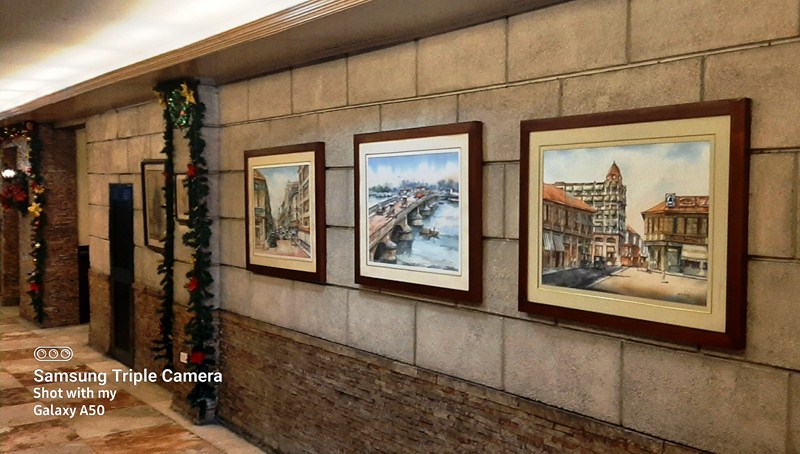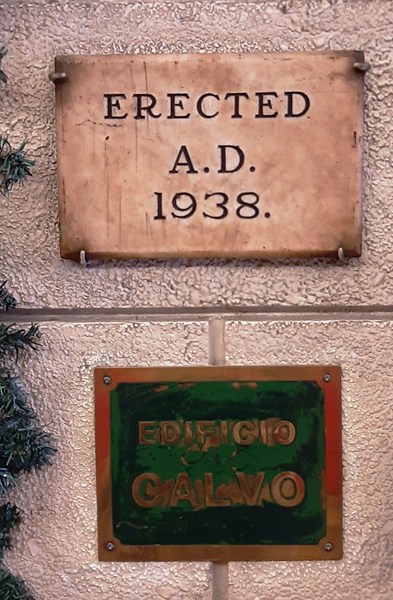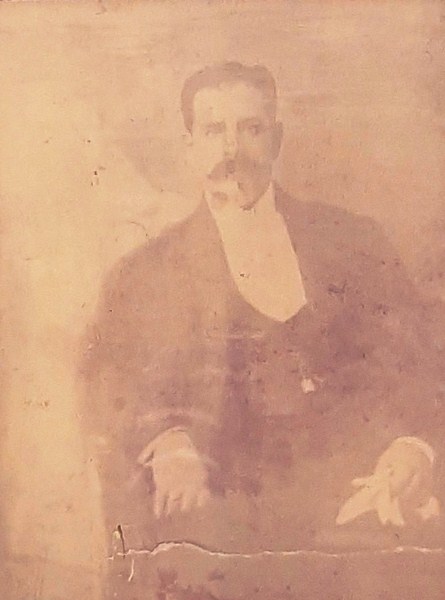The historic Calvo Building, an outstanding example of Beaux Arts architecture, is one of the remaining buildings from the earlier part of the 20th century along Escolta Street. It was designed by architect and civil engineer Fernando H. Ocampo, Sr. (of Arguille & Ocampo Architects) and inaugurated on August 14, 1938 on the land owned by the couple Angel Calvo and real estate businesswoman Emiliana Mortera Calvo.
On November 1944, during World War II, it was temporarily used by Japanese Imperial Forces and was destroyed during the 1945 Battle of Manila and restored in 1946. On August 14, 2018, a historical marker (entitled Gusaling Calvo) was installed by the National Historical Commission of the Philippines.
This 4-storey building was one of the most prestigious business addresses of its time. Its tenants were:
- Philippine Bank of Commerce (ground floor)
- Lissar Commercial (ground floor)
- Aquino-Lichauco Law Offices (second floor)
- Offices of Araneta & Co. (third floor)
- MV Villar Records Store – then Manila’s biggest vinyl record bar
- Sabater Optical
- Mareco Broadcasting – owner of 105 Crossover FM
- Mabuhay Records – a recording company that produced albums for kundiman legends Ruben Tagalog, Sylvia dela Torre and Pilita Corrales
- Sorriente-Santos Department Store – the first store that introduced the “buy-one-take-one” selling strategy.
- Luisa & Son (roof deck) – a pre-war soda fountain popular with Manila’s high society.
On March 1, 1950, the GMA Kapuso Network was also born at a makeshift studio at the fourth floor of the building (before moving to its present location in Diliman, Quezon City) when former American war correspondent for United Press Robert “Uncle Bob” Stewart (who eventually fell in love with a Filipina and the country as a whole) transmitted the first signal of Republic Broadcasting System, now radio station DZBB-AM. Stewart would later expand his media enterprise into television, and Radio Broadcasting System would later be renamed GMA.
Today, Uno Seafood Wharf Palace, Mercury Drug and Tropical Hut flank the entrance to the building, with Wah Yuen Hot Pot and Seafood Restaurant in its Calle Soda side.
Its mezzanine is home to the little-known Escolta Museum which contains memorabilia from the past. During the post-war years, a fourth floor was added to the three-storey edifice.
Check out “Escolta Museum”
Its front being a flagstop for the tranvia (electric tram line), it is the only building along Escolta that is pushed back. It house one of the few classic-style and rare, manually operated Otis elevators.
The richly-decorated and stunning facade at the second level has arched windows (except at the truncated corner) flanked by Ionic pilasters, above which is a cornice embellished by garlands and gracefully broken, in alternating sections, by cartouches supported by corbels above the window’s arch.
Calvo Building: 266 Escolta cor. Soda Sts., Binondo, Manila. Coordinates: 14.597141°N 120.978221°E.
How to Get There: The building is accessible from the LRT1-Carriedo station. The Pasig Ferry also has an Escolta stop.

